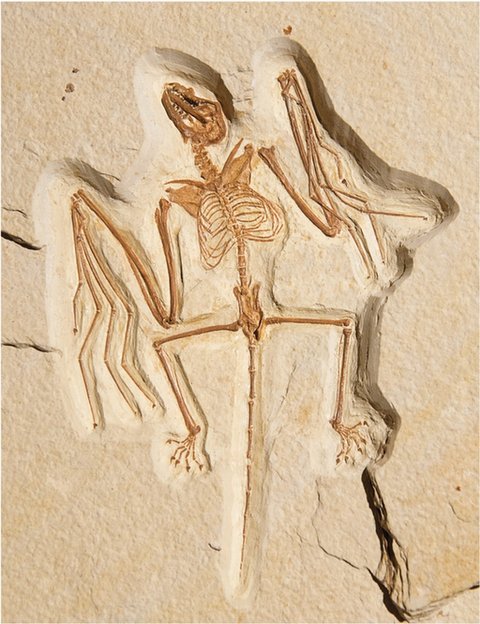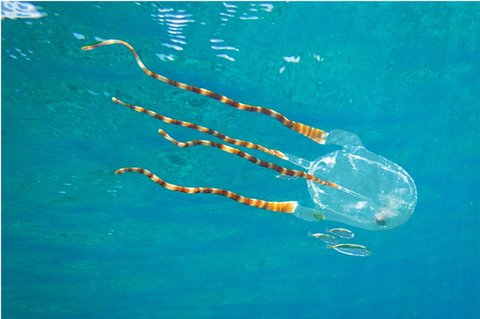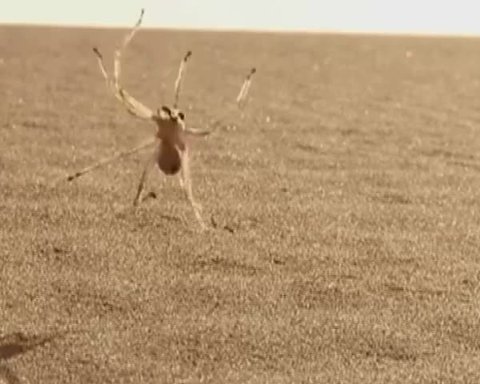
Finney’s bat
What’sOldIsNewAgain
ItissummerinWyoming.BonnieFinneyholdsalargeslab.Shehammersasmallwedgeintotherock.Acrackopensup.Theslabpopsopenlikea book.
Insideisa50‑million-year-oldbatfossil.Itdoesn’tlooklikeanybatshe’severseenbefore.It’slargerthannormalandhasaclawoneachfinger.Morethan10yearslater,scientistsagree.Thebatisfromalong‑extinctspecies.Theynamedthebatafter Finney.
FlipFlop
ScientistIngoRechenberglooksatthesandydunesinMorocco.Nothingismovingexceptwavesofheat.Thenhesquintsandspotsasmall spider.
Rechenbergstudiesrobotics.Heisinterestedinhowthingsmove.Hetriestocatchthespider.Suddenly,itflipsandcartwheels away.
Rechenberghadneverseenaspidermoveinthisway.Itwasanewspecies.Nowit’scalledCebrennusrechenbergi, theMoroccanflic‑flac spider.
Moroccanflic‑flac spider
Boy,OhBoy!
Haveyoueverseenajellyfish?TheBonairebandedboxjelly (Tamoyaohboya) wasspottedbyatleast50swimmersin1989.Itwasgivenanicknamebecausenooneknewwhatitwas called.

Bonairebandedbox jelly
Infact,itwasn’tofficiallynameduntil2011.Ateachercameupwiththename.Ohboya refersto“Oh,boy!”That’sfortheexpressionyoumightusewhenyoufirstsee it.
Anyonecanstudytheworldaroundthemandnoticethings.It’scalledcitizenscience.Informationpeoplecollectcanbesenttoscientists.Itcanmakeadifferenceinstudyingbiodiversityon Earth.
Thereissomuchtolearnfromnewspecies—fromadaptationtofightingdisease.Discoveringandstudyingnewspeciesisimportantnowmorethan ever.
